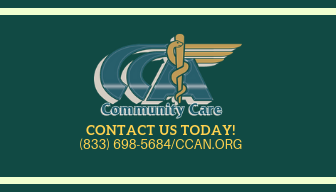
What Happens When You Call 911 in Northeast Ohio?
07-03-2019Although we hope you won’t have an emergency that requires a call to 911, we all take comfort in knowing it’s available. But did you know the ability to call a single number no matter your location in the country is a fairly new technology? The first 911 call was made in 1968. Before then, you had to call the local police or fire department directly or dial “0” and ask a phone operator to connect you.
Today, if you live in northeast Ohio and need emergency medical attention, it’s likely you’ll be served by Community Care Ambulance. We are one of the largest medical transportation organizations in the area. We serve areas like Andover and surrounding townships, Ashtabula and Middlefield for 911-Emergency Medical services.
History of 911
The idea for a central emergency number can be traced back to the early 1900s. However, it wasn’t until 1968 that a 911 line was established by AT&T, which at the time operated nearly all telephone connections in the United States. Ever wondered why those numbers were chosen? According to History of 911 by PBS, “(AT&T) wanted a number that was short, easy to remember and unique, and 911 had never been used as an area code or service code before.”
It actually wasn’t until 1999 that Congress directed the FCC to make 911 the universal emergency number for all telephone services.
When to Call 911
You should call 911 when there is an emergency such as a fire, car crash, crime (especially if in progress) or a medical emergency. If you’re unsure whether your situation is an emergency, experts advise calling 911 and letting the dispatcher determine whether you need emergency help.
If you or a child calls 911 by accident, don’t hang up. Stay on the line and answer the dispatcher’s questions, then say you called by accident.
What Happens When You Call 911?
The U.S. emergency system is operated by local and state government, and when you dial 911 you are connected to a Public Safety Answering Point (PSAP). After determining the nature of your emergency, the dispatcher will decide which response services should be notified – whether police, fire and/or ambulance.
Seconds count during an emergency so it’s good to know in advance what you will be asked to provide. According to 911.gov, here are some key pieces of information you should try to have:
- The location of the emergency, including the street address
- The phone number you are calling from
- The nature of the emergency
- Details about the emergency, such as a physical description of a person who may have committed a crime, a description of any fire that may be burning, or a description of injuries or symptoms being experienced by a person having a medical emergency
Emergency Medical Dispatch
Emergency Medical Dispatch (EMD) is specialized training that dispatchers receive in order to provide potentially lifesaving medical instructions over the phone. In 2016, the State of Ohio mandated that all PSAPs provide callers with access to Emergency Medical Dispatch. EMD has been around since the 1970’s but it has evolved over the years to an advanced medical protocol with life-saving instructions including CPR, Bleeding Control, Airway Management, Emergency Childbirth procedures, administration of Narcan in overdose situations or Aspirin for possible Heart Attacks.
While EMD is new to the State of Ohio, Community Care Ambulance has been providing Emergency Medical Dispatch services for over a decade. Here at Community Care Ambulance, our dispatchers are certified through the International Academies of Emergency Dispatch in the use of the Medical Priority Dispatch System (MPDS), which is a scripted protocol system designed to quickly evaluate the condition of the patient and provide any potential treatment prior to an ambulance arriving.
When you call 911, a dispatcher will ask you several very important questions, it can seem like these questions are not important or it is delaying help- but that is not the case. With EMD, you are getting advance medical instructions over the phone. One of the first few questions is “Is s/he awake?” and “Is s/he breathing”. These questions help determine whether a person is conscious and breathing. If they are not, an EMD can provide CPR instructions over the phone right away. While this is going on, another Dispatcher is sending the Paramedics and other First Responders to help.
It can be frustrating in an emergency, but listen carefully to the dispatcher; answer their questions and follow their instructions. EMDs have helped thousands of lives during the first few minutes of dialing 911. Every question they ask has an important reason and can make a difference in the outcome of the person needing help.
About Community Care Ambulance (CCA)
The CCA team – which includes EMTs, paramedics and dispatchers – delivers exceptional pre-hospital care and transportation. In addition, we provide information on our website about health and wellness issues that affect the communities we serve in Northeast Ohio. It’s part of our community outreach that also includes free health screenings. If you have any questions about our services, please call 833-698-5684.
Follow us on Facebook, Twitter and LinkedIn for our latest updates!

© Copyright 2025 Community Care Ambulance. All Rights Reserved. Design by: Web Strategy Plus
